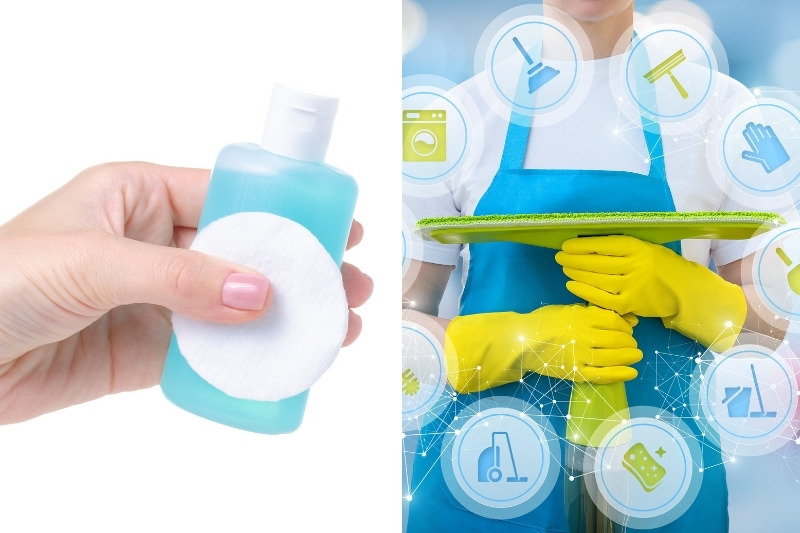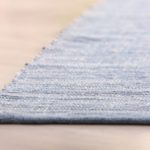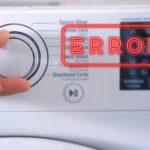Acetone, most commonly known as the key ingredient in nail varnish remover, can do more than just remove nail polish off fingernails.
It can treat stains, degrease various surfaces, and even eradicate pen marks! It’s relatively cheap, easy to come by and a fan favourite in the cleaning world.
So, what exactly is acetone, what else can it clean and how do you use it? Find out below!
What Is Acetone?

Acetone is a liquid organic compound that occurs both naturally and can also be man-made. It is made up of carbon, hydrogen and oxygen atoms, and is usually clear in colour.
This miscible (mixable), volatile solvent is most commonly associated with removing nail varnish, but it actually has excellent degreasing abilities, which is why it is widely used to remove grease from mechanical equipment, and to clean tools in laboratories.
In addition to this, a lot of solutions, like multi surface cleaning goods and paint removers already contain acetone as their core ingredient.
At home it’s typically used to dissolve grease around hobs, to remove paint, to take out oil stains, and to get rid of superglue from surfaces.
One of the few downsides to acetone is that it is highly flammable, which is why you have to be very careful when using this chemical. And it’s also super smelly—some people say the scent is similar to that of a cucumber and is quite fruity, but you can decide for yourself!
In a lot of cases, acetone’s strong and pungent odour can sometimes make it hard to work with, which is why you must have excellent airflow around you when you’re cleaning with it. Without sufficient ventilation, you might find it difficult to breathe after a while.
Other names for acetone include:
- Propanone
- Dimethyl ketone
- Propan-2-one
The chemical formula for acetone is: C3H6O
What Can Acetone Clean?

Acetone can be used to clean a wealth of different items and surfaces, below you’ll find some examples of where/when it can be used:
- To clean metal surfaces
- To clean glass surfaces
- Remove paint/varnish/lacquer
- Remove super glue
- Remove oil
- Cleaning lipstick off a carpet
- Cut through grease
- To clean nail grooming tools – nail clippers and cuticle cutter, for example
- To remove melted plastic from surfaces
- To clean plastics, whereby their chemical makeup is different to the chemical makeup of acetone – polypropylene, for example
- Remove grime from mugs and cups – always wash mugs/cups out thoroughly afterwards
- Remove stickers/sticker residue
- Take out permanent marker marks
- Eradicate ink stains
What Can’t You Clean with Acetone?
Due to its strength and chemical makeup, acetone cannot be used on every single surface. And if you did use acetone on the surfaces mentioned below, they might end up melting or becoming extremely damaged and discoloured, and in some cases, this type of ruin could be beyond repair.
The surfaces include:
- Plastics, whereby their chemical makeup is similar to that of acetone’s – acrylic, polycarbonate, PVC and plastic toys, for example.
- Fabrics – silks and synthetics like modacrylic and triacetate, for example.
- Any fine material that could dissolve.
How To Use Acetone for Cleaning

Below you’ll discover a few ways you can use acetone to clean various items and surfaces in your home. But before you dive right in, have a quick read of the tips below:
Always
- Work with caution and care – Acetone is a strong chemical that can cause skin irritation and harm.
- Gloves, a mask and protective eyewear should be worn when handling acetone – Don’t inhale too much of the acetone fumes as this can cause respiratory problems, and if you get it on your skin, it may cause redness/dryness. You must treat these issues immediately.
- Take your time – Don’t rush!
- Ventilation is key – Acetone is a very stinky chemical so be sure to open as many windows as you can.
- Not to be used near flames – Acetone is flammable, so keep it away from live flames.
- Test out acetone before you use it – Acetone isn’t suitable for all surfaces, so always do a patch test before you go on to use the product.
- Use a little amount of acetone at a time – Large quantities can cause irreparable damage to surfaces.
- Keep pets and kids away from the acetone at all times – Acetone is a clear liquid chemical that can easily be mistaken for water, you need to be careful when using it. And you should keep it well out of the reach of children and animals.
Using acetone

When using acetone to clean surfaces in your home, you will generally dip a cotton wool ball, or a cotton bud, into the fluid, wring any excess moisture out, and dab at the patch you need to clean with the product.
It’s not difficult to use acetone to clean various spots, but it can be a tad time consuming to clean with the chemical. Why?
First, you shouldn’t really be using a lot of acetone at once, so you will likely spend a lot of time going back and forth re-soaking your cotton wool ball/bud in the solution. Secondly, you’ll have to swap out your cotton balls for fresh ones regularly. And finally, acetone dries fast, so you might end up going over some dirty patches more than once.
Remember: You must always do a patch test before you commit to working with acetone as the chemical might cause irreparable damage to surfaces and items.
How to clean superglue off a surface with acetone
To clean superglue off a surface with acetone, you need to:
- Dab a cotton wool ball into some acetone.
- Blot the superglued area with the wool ball.
- Continue to do this until the superglue starts to break down/come loose.
- Then with a plastic scraper you need to start scraping at the gluey area.
- Continue to apply some acetone to the area to keep on loosening up the glue.
- Keep scraping at the area to remove the glue.
- Once the superglue has been removed you just wipe the surface down as normal.
Read out in-depth guide on how to get superglue off various surfaces around your house for more cleaning hacks.
Tip: You can use the steps above to treat oil, grease and melted plastic problems too.
How to clean a mug/cup with acetone
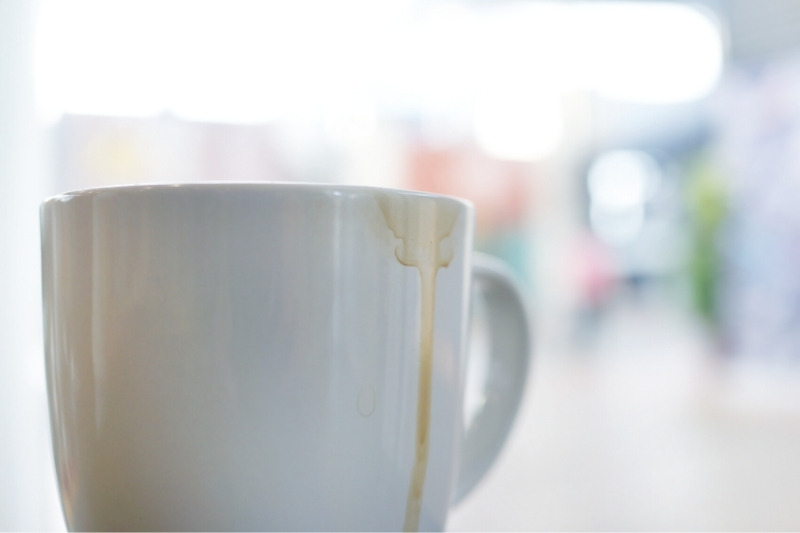
To clean a mug/cup with acetone, you need to:
- Grab your dirty stained mugs.
- Dip a cotton wool ball into some acetone and squeeze out the excess fluid.
- Start rubbing the wool ball over the stained areas in the cup.
- Continue to do this until the stains have lifted.
- You will need to swap an old wool ball for a new cotton wool ball before moving onto a new mug.
- Completely rinse the mugs in washing up liquid and hot water before using them again.
Tip: You can use the steps above to clean off permanent marker marks from surfaces like white boards. And you can use the method to remove biro stains from leather seats. Always test out your method before committing to it though.
How to clean ink stains with acetone
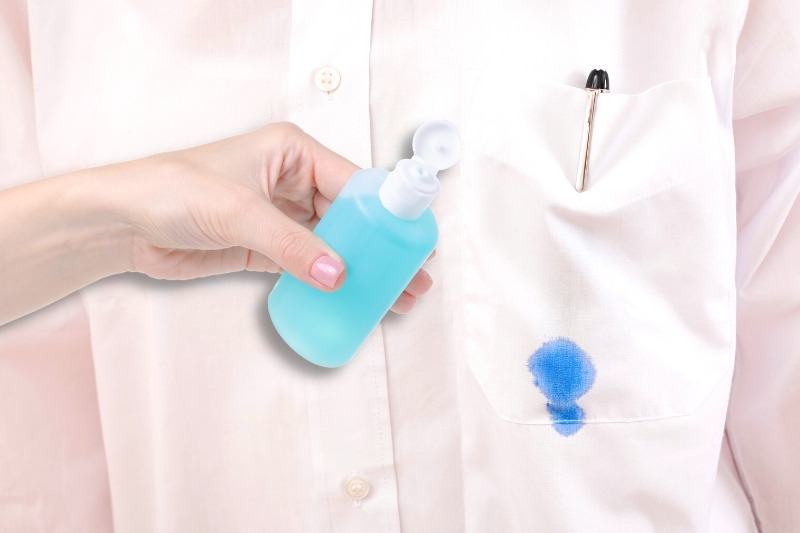
To clean an ink stain off an item of clothing with acetone, you need to:
- In a bowl mix one part acetone with two parts warm water.
- Grab your ink-stained garment and perform a patch test with the diluted acetone.
- If you don’t see any adverse effects, you can continue with this method.
- Dab a cotton wool ball into the acetone-water mix and wring excess water out of the wool ball.
- Dab at the ink stain on your item of clothing.
- Continue to dab at the stained area until the mark has gone – you will need to change cotton wool balls regularly, otherwise you’ll just be transferring ink around.
- Once the ink stain has gone you can launder your item as usual.
Note: Delicate materials, like synthetics, and acetone don’t usually mix well together. And applying acetone to such materials may result in them getting damaged. So, if you’re in doubt, leave out the acetone and try another stain remover.
How to clean limescale off granite with acetone
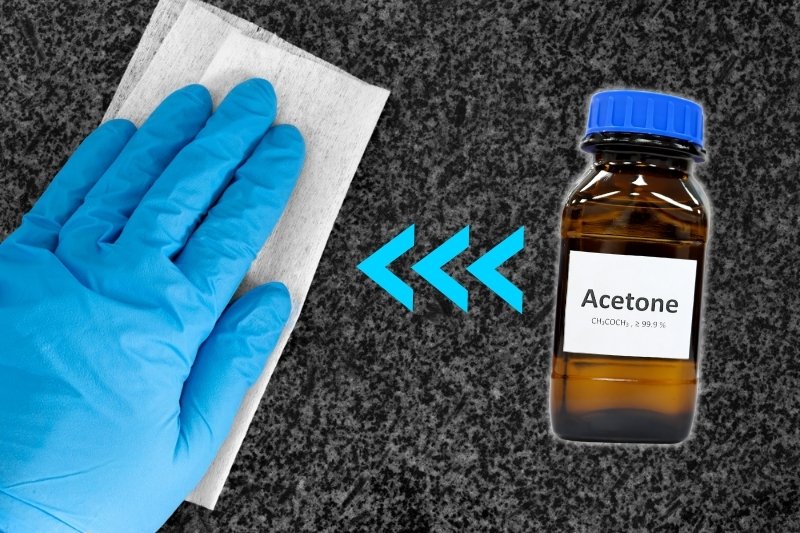
To clean limescale off granite using acetone, you need to:
- Add a dash of acetone to a clean cloth.
- Start rubbing the granite in a circular motion to clean away the limescale.
- Continue to do this until the limescale has been cleared away.
- Wipe the granite surfaces down with a clean cloth before using the surface again.
After using acetone
Once you’ve used acetone to treat or to remove stains from your home, you need to clean the surface(s) you’ve been working with. All you need to do is use a damp cloth to do this, or if it’s possible you could use some washing up liquid to give the area an extra thorough clean.
Doing this will just make the surface extra safe for all the family.
Benefits Of Using Acetone When Cleaning
As you can see acetone has many cleaning uses, so let’s have a quick recap of its main benefits:
- Quick drying solvent
- Low toxicity level, if it’s used properly
- Inexpensive to buy
- Colourless liquid
- Water soluble
Drawbacks Of Using Acetone When Cleaning
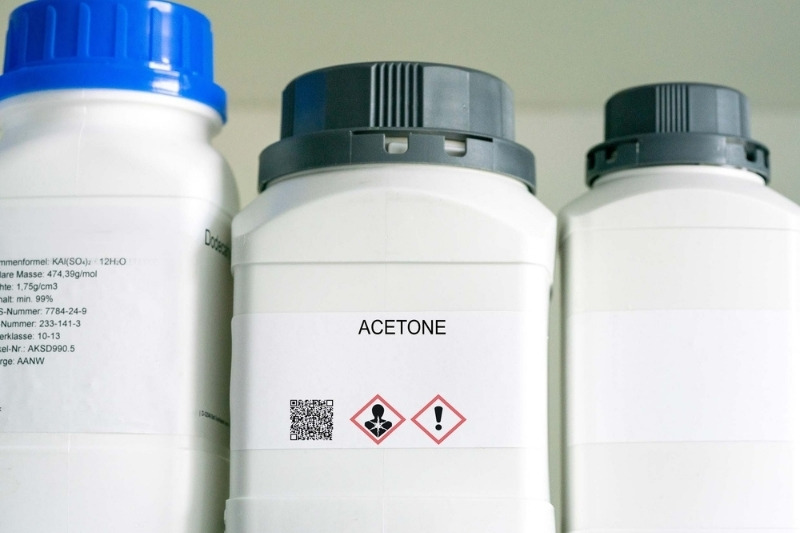
Of course, there are a couple of drawbacks to consider when using acetone for cleaning, here they are:
- Flammable – You must be extremely careful about where and when you use it.
- Smelly – You must make sure you have good ventilation when using it, and you should wear a mask too.
- Can’t be used on materials that can dissolve easily – Acetone is likely to damage delicate surfaces and items, so you’ve got to be extra careful.
- Discolouration – Some surfaces and items may lose their colour when they come into contact with acetone.
What Products Should You Never Mix with Acetone?
Mixing bleach with other chemicals is a big no-no. So, it’ll come as no surprise to hear that you should not combine acetone with bleach.
If you do mix the two ingredients together, you’ll likely end up with chloroform, which is a highly toxic gas. And if it is inhaled in large quantities, it could knock you out.
You should avoid doing this! And instead, mix bleach and water together, or use bleach on its own, but be extremely careful.
How to Remove Acetone Residue After a Spillage
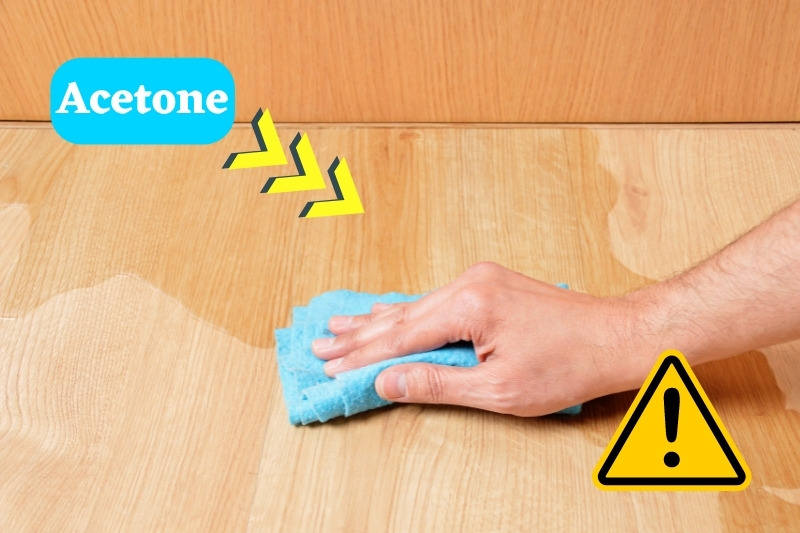
If you’ve accidentally knocked some acetone over and it’s tipped over the floor, you need to act quickly to mop up the fluid.
To remove the spillage just grab a white cloth and blot at the area – soak up as much liquid as you can. Then pick up any loose debris that you can and dispose of it.
Next you need to mix a quarter of a teaspoon of washing up liquid in a cup of warm water. And then you need to dip a clean white cloth into the water, wring the cloth dry, and start blotting at the acetone-stained area.
Start blotting from the edge of the stain towards the centre of the stain, and take your time doing this. You’ll have to repeat the steps above until all the acetone has been picked up.
Remember to rinse your cloth out as you soak up the acetone, otherwise you’ll just be re-applying the acetone to the floor.
Once you’re done and you’ve picked up as much acetone as you can, use a new clean cloth, that’s been soaked in cold water, to blot the area again. After this, use some more clean cloths to remove further waste fluid from the area, and then allow the surface to dry naturally.
You shouldn’t walk over the treated area until it dries properly, so keep kids and pets out of the room during this time.
Is Acetone the Same as Rubbing Alcohol?
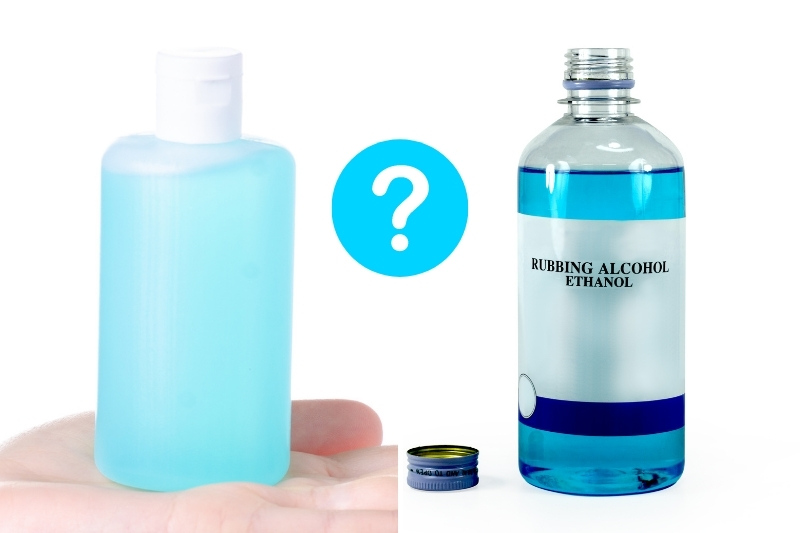
No, acetone and rubbing alcohol are not the same thing.
They have different molecular makeups and belong to different families. Acetone belongs to the ketone family, and rubbing alcohol is part of the alcohol family.
And although both acetone and rubbing alcohol look similar, smell unpleasant, and are widely used in the cleaning industry, because of their abilities to tackle some of the toughest cleaning tasks around, they still shouldn’t be confused together.

Bethan has a passion for exploring, reading, cooking and gardening! When she’s not creating culinary delights for her family, she’s concocting potions to keep her house clean!
